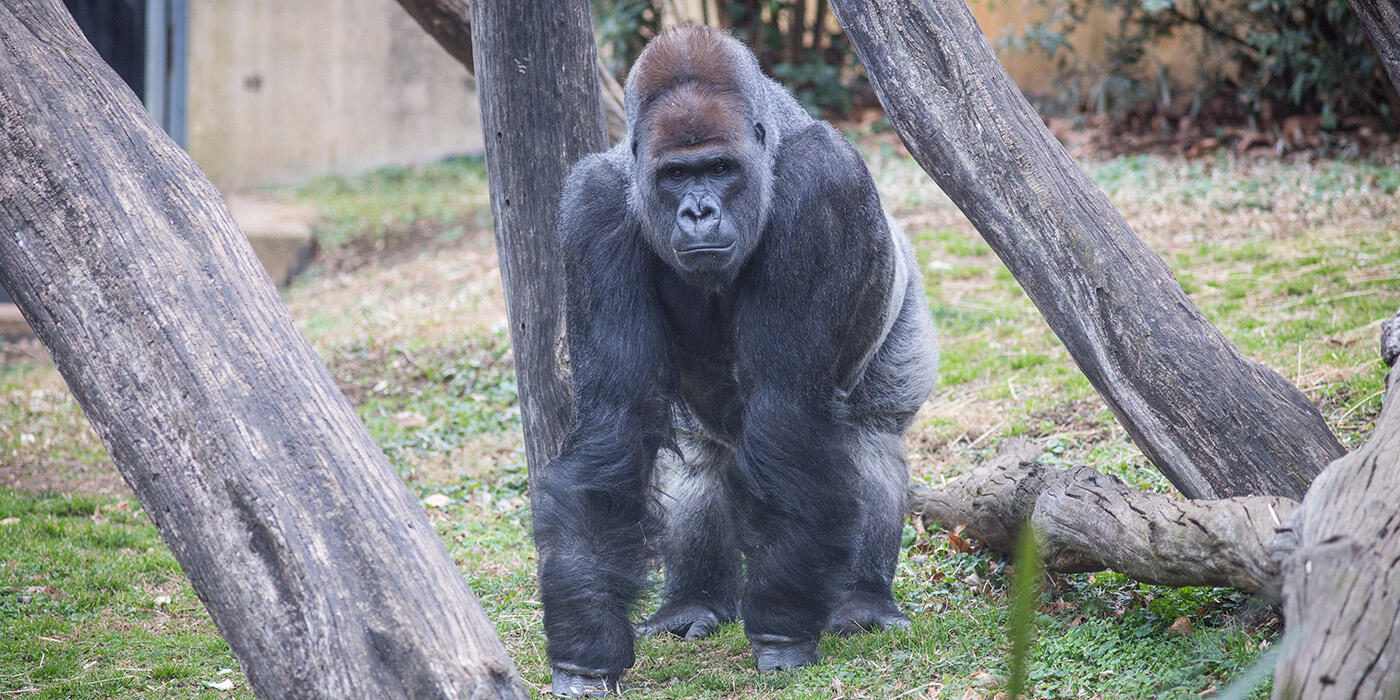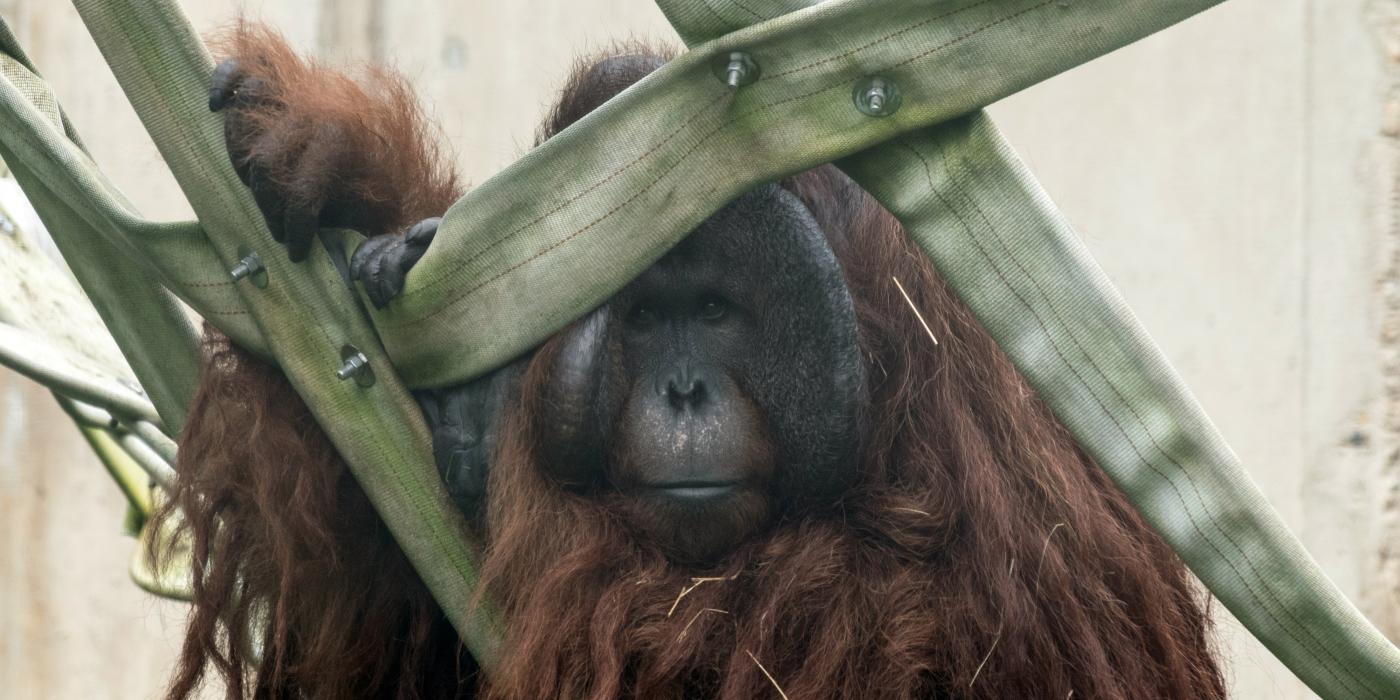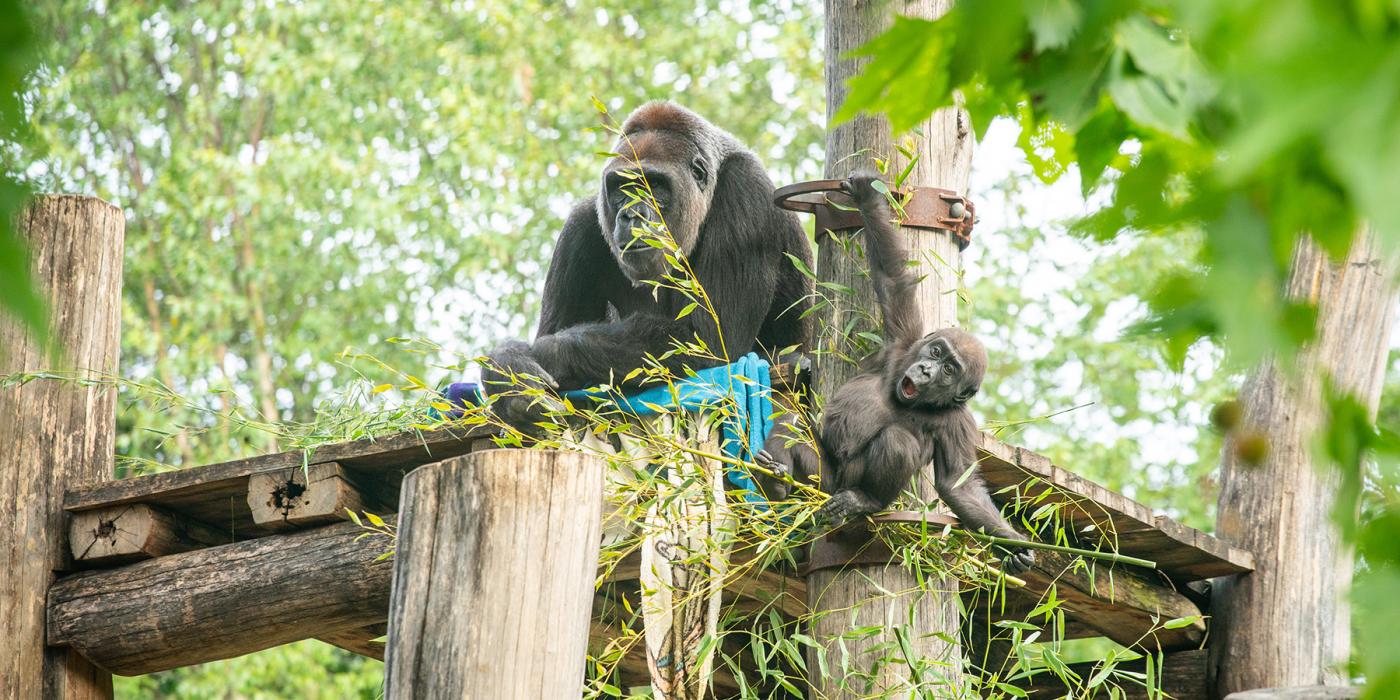#GorillaStory: Happy 2nd Birthday, Moke!
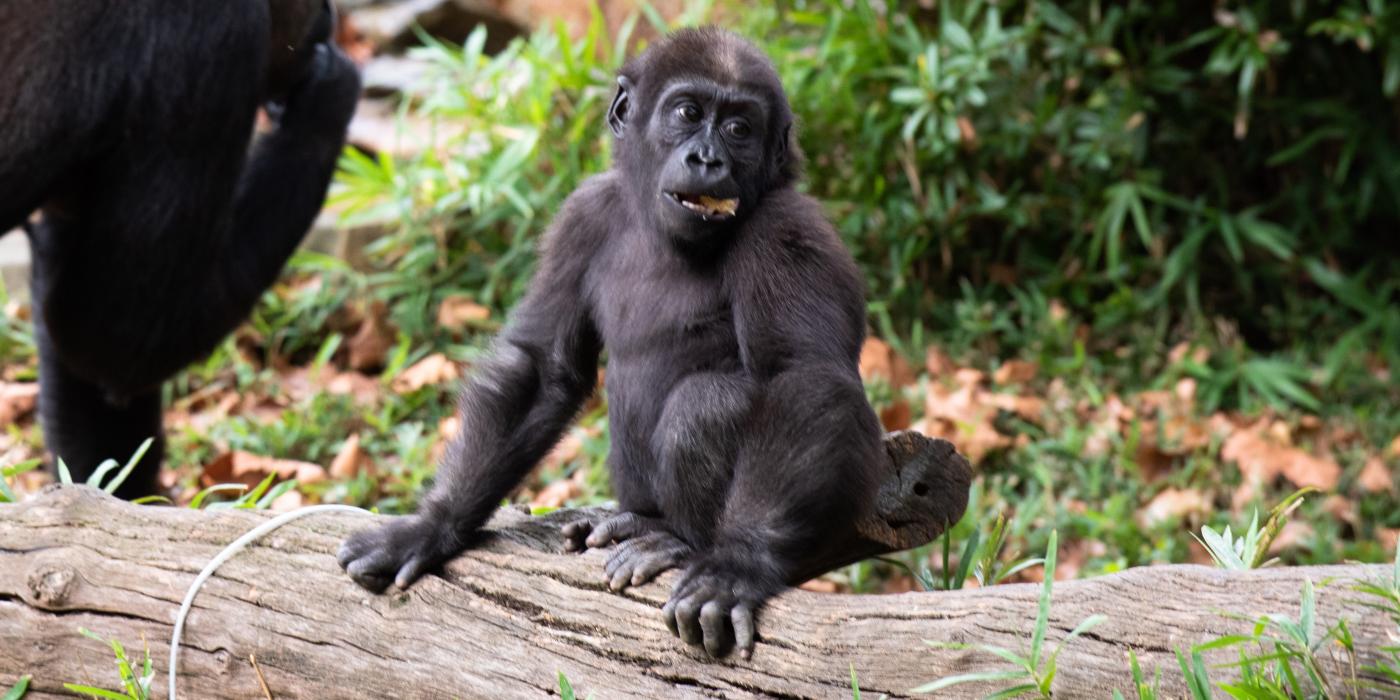
Today, our confident little western lowland gorilla, Moke, marks yet another big milestone—his second birthday! Although the Smithsonian’s National Zoo is closed in an effort to contain the spread of COVID-19 (more on that later), the primate team is planning to make it a very special day for Moke. The talented team in our Department of Nutrition Sciences is whipping up a delicious and nutritious ice cake filled with the troop’s favorite treats.
This past year, Moke has truly come into his own. We are observing more of his own distinct personality emerge, and he is venturing off more into the world independently. Rest assured, though, the troop always has watchful eyes on him. He keeps the troop—and his keepers—on their toes! Nonetheless, it is an utter joy and privilege to watch him play and explore.
Watching Moke’s level of play steadily increase has been a prominent highlight from the past year. Play helps an animal to explore his or her environment, navigate relationships, manipulate objects and learn so much about their world. Moke will investigate aspects of his habitat that other gorillas have not visited in some time, and I suspect he helps them to see things with fresh eyes. At the moment, he is certainly the most inquisitive member of his troop. Moke is always the first to explore anything new and will often be the first to notice if anything is out of the ordinary. He is a keen observer!
Halloween? We’d say Moke is a fan. Our western lowland gorilla infant had a blast when keepers gave the troop some spooky enrichment. Each gorilla received his or her own bucket filled with pumpkin slices and other tasty treats!
That said, with the Zoo being closed to visitors, there have been no overt changes in the gorillas’ behavior to suggest they are being significantly affected by the lack of visitors inside of the Great Ape House. However, I suspect they might be more aware of the lack of visitors from their outdoor yards, since this time of year they would likely hear the chit-chat and footsteps of large crowds. I am noticing that it is easier to hear the sounds of frogs and birds. Chances are Moke is noticing these, too.
Moke seems to enjoy exploring the world with all of his senses. When presented with a new enrichment item, he will undoubtedly smell, taste, observe and shake it. He appreciates things that make noise, have a unique texture or are just novel to him.
Keepers gave Moke a basket for Valentine's Day. He turned it into a drum!
Moke is often exploring items through his mouth. We provide durable chew toys for the gorillas to interact with, and Moke tends to gravitate towards these, perhaps more than the other gorillas. Items such as kongs or nylabones can be filled or coated with a special treat, such as applesauce or pumpkin, and sometimes we will freeze these as well. As one might imagine, our gorillas can be tough on their toys and some well-loved items can get a bit run-down over time. If you would like to give Moke a gift for his birthday, you can do so by donating to our Enrichment Trunk. On behalf of our animals, we thank you for your generosity!
While the gorillas receive treats throughout the day as part of their enrichment, we also provide them with browse, or fresh tree trimmings, to eat. Their natural diet would include wild celery, stems, bamboo shoots, fruits and tree pulp. Our gorillas have plenty of opportunity to enjoy a nice variety of healthy produce and leafy material, too. The leafy stalks of bamboo we give them are often quite large, and it always brings a smile to my face to see Moke running around with a massive piece that can sometimes be two-to-three times his size! He seems to enjoy displaying with these items, as I suspect he might think they make him look quite “tough” and larger than he actually is.
Moke learns how to strip leaves off a willow branch by watching his dad, Baraka.
Like any youngster, Moke often gets tired and takes an occasional nap—particularly after a big meal. Since gorillas are herbivores and need to break down the large amounts of cellulose in the food they eat, sleep is an essential part of their day.
Because Moke is still fairly young, he has long been allowed to “get away” with being naughty, or overly inquisitive in what each troop member is doing. As keepers, we have to regularly monitor his play, as sometimes he may get carried away and nearly get himself into trouble. For example, he might attempt to fit in spaces where he doesn’t fit, or try to steal enrichment from an individual who might not be quite ready to give it up. As he gets older, though, we more often see troop members become slightly less tolerant of his antics.
It may not seem apparent, but sometimes the best form of enrichment for an animal can be social interaction. Perhaps nowadays—in this age of “social distancing”—we really can appreciate how true this is. He has a unique relationship with each individual in his troop.
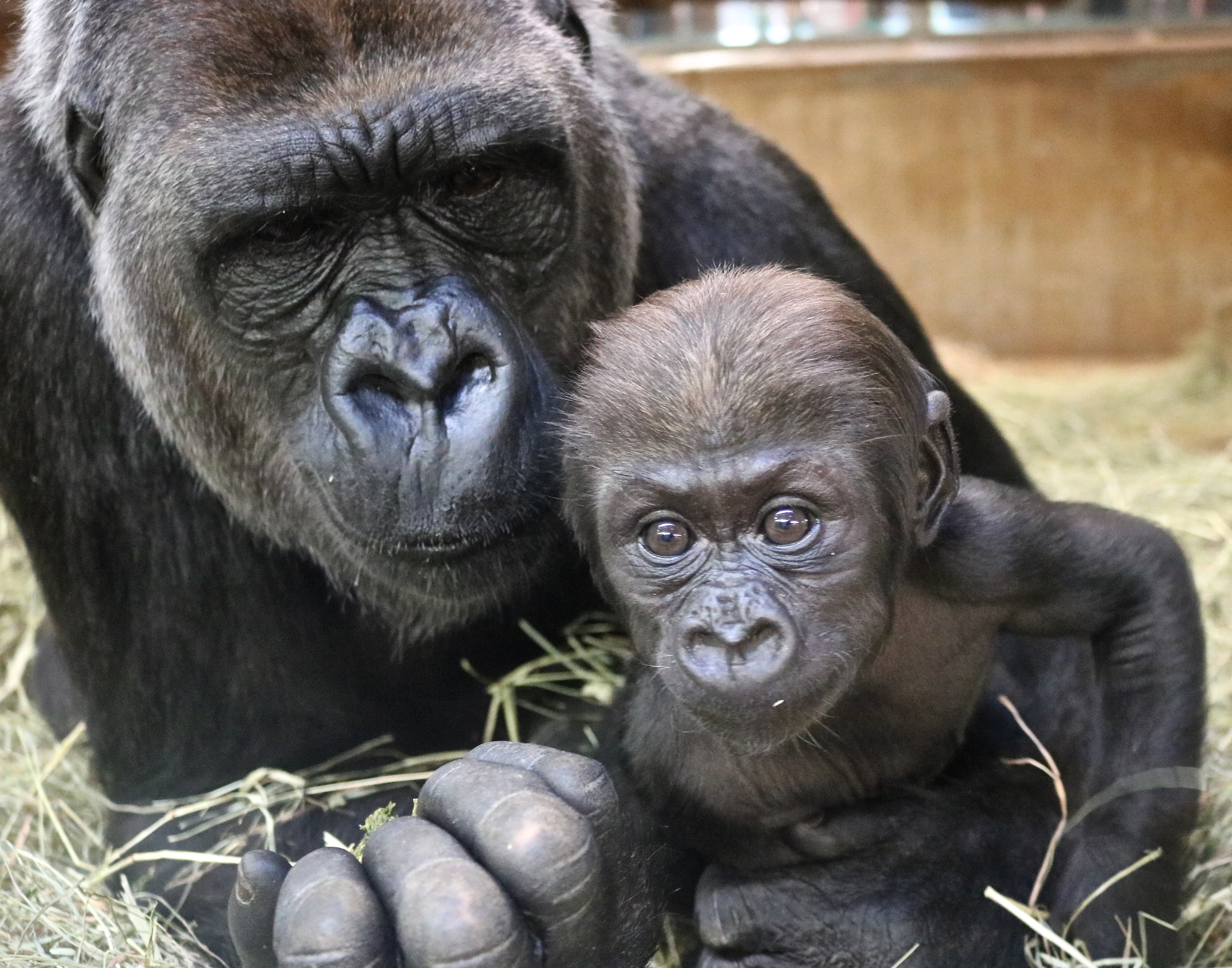
Any primate’s longest and strongest relationship is with their mother. Without a doubt, this is the case for Moke’s relationship with Calaya. Moke is getting more bold in exploring the world, but if he is ever nervous about something, he never hesitates to bolt back to mom for reassurance.
Moke continues to share his mom’s confidence. He has no qualms about coming over to each member of the troop to investigate what they are doing at any given moment. Like Calaya, Moke is often one of the first troop members to “shift,” or travel between their outdoor yard and indoor enclosure, while the other gorillas follow their lead. With her large stature and powerful presence, Calaya is a born leader. We have no doubt that Moke will grow up to be bold as well!
Gorillas typically nest with their mothers until they are around 3 years old. Calaya will do most of the work gathering the hay, blankets and other materials for her nest. But, Moke is undoubtedly learning from her. Sometimes, we will see him pat down a pile of hay around and beneath him in what seems to be an effort to make a small day nest. (Did you know that orangutans make nests, too?)
One common gesture that is unmistakable in gorillas is a “clap.” This action is frequently employed by Calaya, our gorilla mother, to indicate a desired reaction from Moke and Kibibi during their play sessions.
Both Moke and Calaya are helping the primate team better understand how mother-infant dyads communicate with one another. We are still in the early stages of coding our video data for the gesture and proximity research project, which began in 2018. It seems that when Moke was less than 1 year old, he employed more contact gestures such as embrace (sitting on or climbing upon) for nursing or traveling around the enclosures with Calaya. These days, Calaya will allow him to roam and play with others. At times, she scoops him up and quickly scurries away. The family group seems to be attuned to that behavior and will leave him be.
As Moke got older, he became more independent and playful. He plays mostly with Kibibi and sometimes with Calaya and Baraka, when they are in the mood! Playful gestures include grab, grab-pull, bite, slap and roll over. Most of the gestures used are within the zero-to-two meter range and are contact gestures. In some of the videos, we have seen him imitate some of Calaya’s gestures! We look forward to eventually coding all of the videos to be able to provide our findings, but we still have quite a ways to go.
Baraka, Moke’s father, is the silverback and protector of the troop. Moke seems to respect his dad and looks to him for reassurance. When he is in the mood to play, Moke will try to entice Baraka to play by poking at him or tossing some hay into the air. Baraka will sometimes respond by tickling Moke. It is quite a lovely—and unique—sound to hear Moke laugh!
Baraka stands about six feet tall and is a commanding force. Silverbacks are not generally too aggressive, but they will often “display”—that is, throw branches or charge at a high rate of speed—to demonstrate their strength and toughness. Just like Baraka, Moke often keeps an eye on everyone, taking note of where troop members are positioned. He isn’t afraid to draw their attention by showing off. Sometimes, Moke will beat on a door, slap his chest or stomp on the ground to show everyone how very (adorably) tough he is!
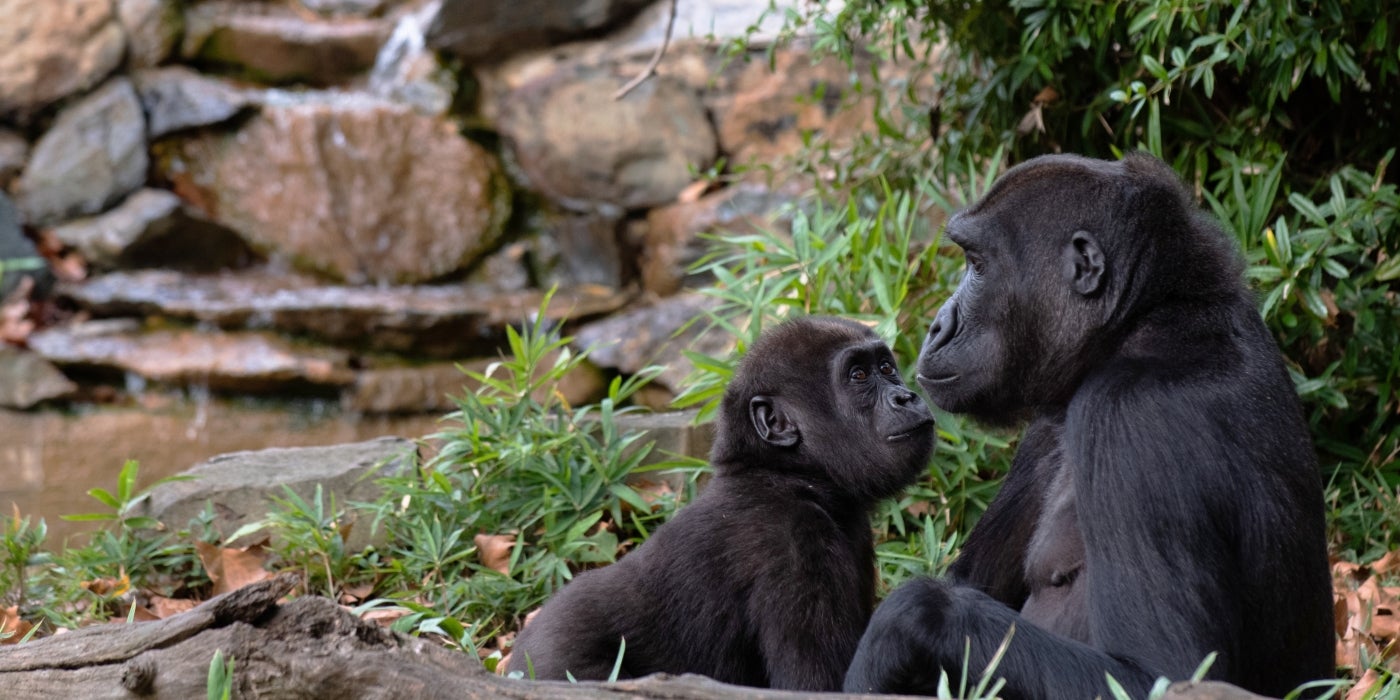
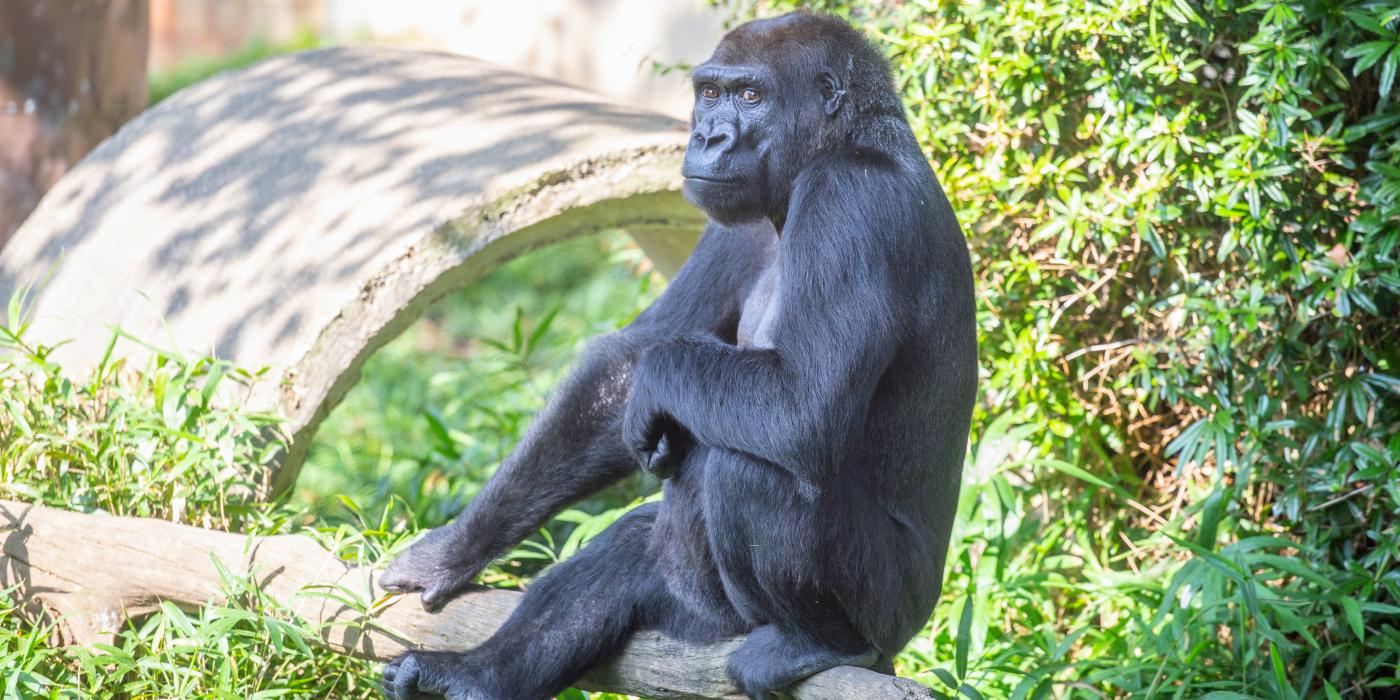
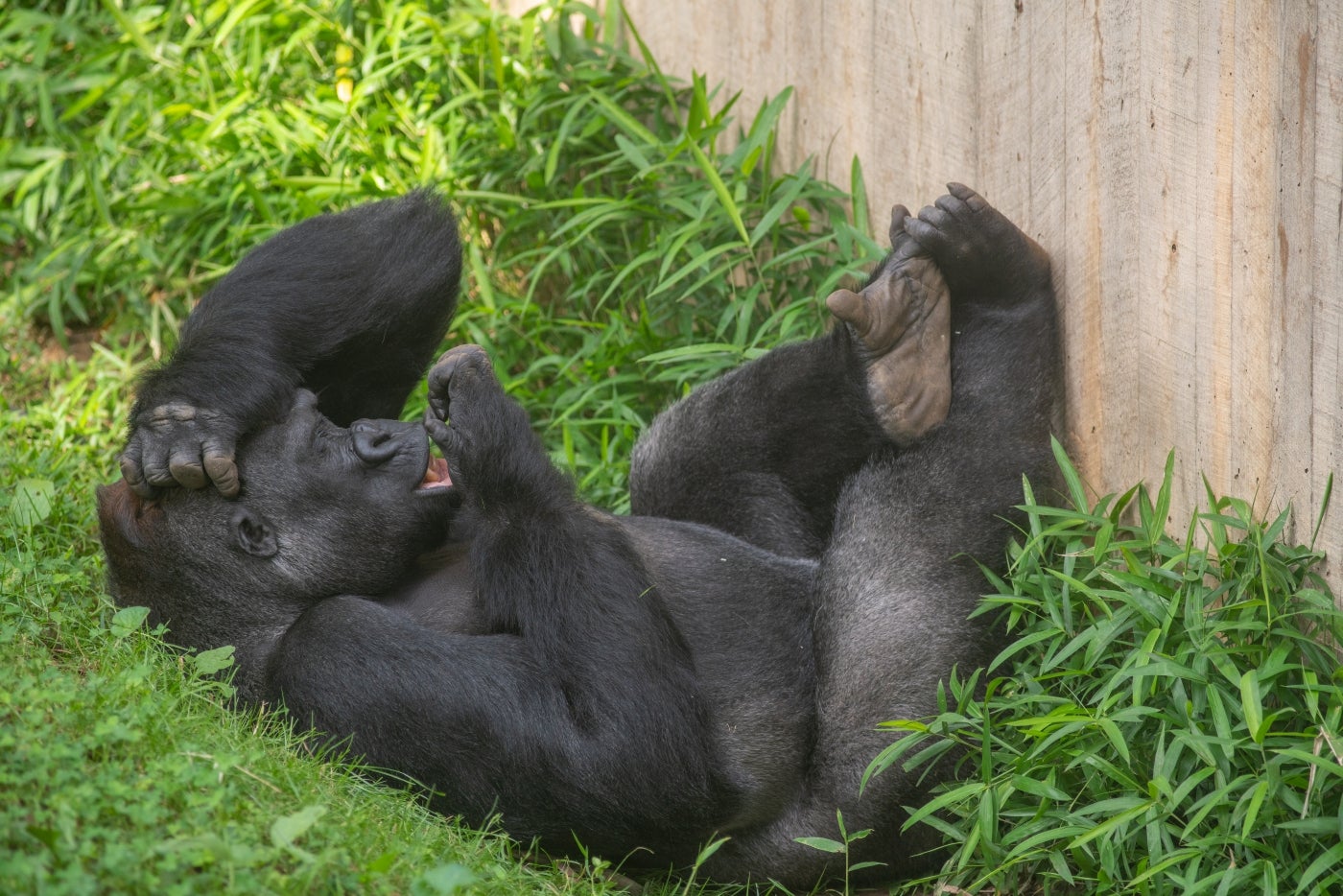
Primate keeper Emily Bricker trains Moke to voluntarily present his ear so she can take his temperature with a thermometer.
Perhaps Moke’s biggest accomplishment this year was voluntarily receiving vaccines! As part of our positive reinforcement training program, Moke is learning new behaviors to help keepers and veterinarians monitor his health. Participation in training sessions is voluntary. We encourage participation by providing a reward in the form of a favorite food item (often grapes, or other fruit) which is preceded by a “bridge”—a verbal “good!” or a quick whistle. All of the training we do with Moke—as with all of our gorillas—is to enable us to monitor their health care.
Voluntarily presenting different body parts helps us to examine the great apes closely. This could come in handy if they even have a nick or scrape that requires cleaning, for example. Currently, the behaviors that Moke knows well are ‘belly,’ ‘hands,’ ‘stand,’ ‘sit’ and injection. He also knows how to climb upon a scale so we can track his weight. On his first birthday Moke weighed 17 pounds. Now, he’s 37 pounds! In comparison, our juvenile Bornean orangutan, Redd, weighs just 28 pounds. Orangutans tend to grow more slowly than gorillas do. Even so, it is quite impressive that Moke gained 20 pounds over the course of the year.
Moke presents his belly to keeper Emily Bricker.
Moke is currently learning ‘open mouth’ (this allows us to closely examine his teeth), acceptance of pulse oximeter on his finger or toe (we obtain monthly vitals on the great apes and this tool provides us with information about heart rate and oxygen saturation levels), ‘ear’ (keepers are working to get him comfortable with having a thermometer in his ear), ‘foot’ and ‘turn around.’ The next big milestone for Moke is another full veterinary examination, likely in concert with his mom, Calaya. This will certainly be a noteworthy event and will give us a full picture of his health.
On the subject of health, many of you have asked whether our orangutans, gorillas, gibbons or lemurs are susceptible to COVID-19. A number of pathogens are known to circulate between humans and non-human primates. We know that common human respiratory viruses (such as influenza) have caused outbreaks in wild habituated great apes. There is a report on transmission of the coronavirus (RNA-containing spherical viruses of the family Coronaviridae) that causes the “common cold” in humans resulting in respiratory disease in chimpanzees. Therefore, our working assumption is that the emergence of this novel coronavirus that causes the COVID-19 disease could indeed pose a health risk to great apes in human care. Keepers, curators and veterinarians are actively communicating about this unprecedented health crisis and taking steps to keep our gorillas—and all primates in our unit—healthy and safe.
As a final note, we wanted to express our sincere thanks for your ongoing support of our entire animal care team. We see your notes on social media, and they mean the world to those of us who continue to work behind the scenes and care for the animals we all know and love. Be well, stay safe and we look forward to seeing you at the Zoo!
Can’t get enough of Moke? Follow the latest news on our juvenile western lowland gorilla using the hashtag #GorillaStory. While the Zoo is closed to the public, keepers work diligently behind the scenes to ensure every animal receives the best care. Please help us continue our mission to save species by donating to our Emergency Fund.
Related Species:

